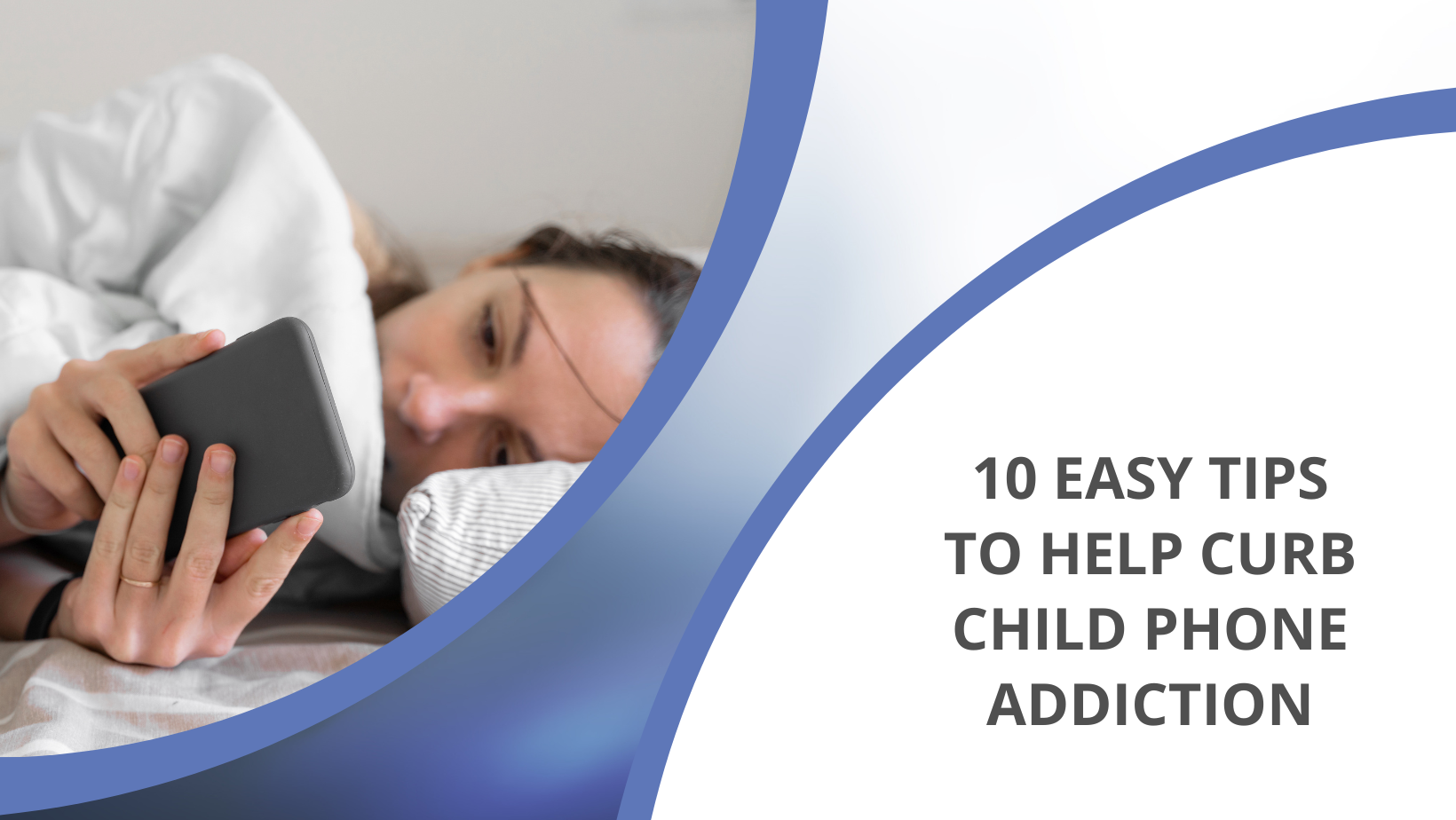
10 Easy Tips to Help Curb Child Phone Addiction
In today’s digital age, children are growing up surrounded by smartphones and other electronic devices. While these devices offer numerous benefits, excessive use can lead to phone addiction, negatively impacting a child’s physical health, mental well-being, and social skills. As responsible adults, it is essential to guide children and help them strike a healthy balance between technology and real-world experiences. This article presents ten easy tips to assist parents and caregivers in curbing child phone addiction and fostering a healthier relationship with technology.
Lead by example: Children often imitate the behavior they see around them. Therefore, it is crucial for parents and caregivers to demonstrate responsible phone usage. Be conscious of your own screen time and establish a healthy digital routine.
Set clear boundaries: Establish specific rules regarding phone usage and communicate them effectively. Define time limits for phone usage during different activities, such as homework, family meals, and bedtime. Stick to these rules consistently, ensuring your child understands the importance of disconnecting from screens.
Create tech-free zones: Designate certain areas in your home as tech-free zones, such as the dining table, bedrooms, or family gathering spaces. Encourage engaging activities like reading, playing board games, or outdoor play in these areas to minimize reliance on phones.
Encourage physical activities: Promote physical activities that divert your child’s attention from their phones. Encourage participation in sports, hobbies, or outdoor play. Organize family outings, picnics, or nature walks to foster a healthier lifestyle and reduce screen time.
Prioritize face-to-face interaction: Facilitate face-to-face conversations and quality family time by allocating specific hours for device-free interactions. Engage in meaningful conversations, share experiences, and make an effort to reconnect on a personal level.
Utilize parental control tools: Take advantage of the various parental control features available on smartphones. These tools allow you to set restrictions on app usage, block certain websites, and monitor screen time. Utilize them wisely to create a safer digital environment for your child.
Explore educational apps and content: Not all screen time is detrimental. Encourage the use of educational apps, interactive learning platforms, or age-appropriate content that promotes skill development and creativity. Balance entertainment with educational value to make screen time more productive.
Engage in joint activities: Participate in activities that involve both you and your child. This could include cooking, gardening, art projects, or DIY experiments. By engaging together, you can create stronger bonds and encourage your child to explore interests beyond their phone.
Promote alternative forms of entertainment: Introduce your child to alternative forms of entertainment that do not involve screens. Encourage reading books, listening to music, playing musical instruments, or engaging in arts and crafts. Help them discover and develop new hobbies.
Foster open communication: Create an environment where your child feels comfortable discussing their phone usage and any challenges they face. Encourage open communication, listen to their concerns, and provide guidance and support when needed. By fostering a trusting relationship, you can address phone addiction effectively.
Conclusion: In an increasingly digital world, it is essential to help children develop a healthy relationship with their phones. By following these ten easy tips, parents and caregivers can guide their children towards balanced phone usage, ensuring their overall well-being and facilitating their growth in a rapidly evolving technological landscape. Remember, it’s not about eliminating technology but about teaching children to use it responsibly and enjoy all the other wonders life has to offer beyond their screens.

